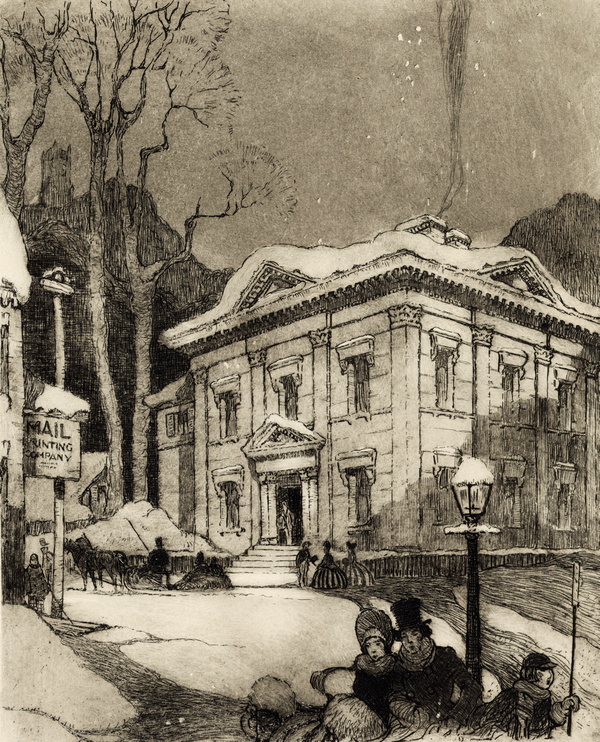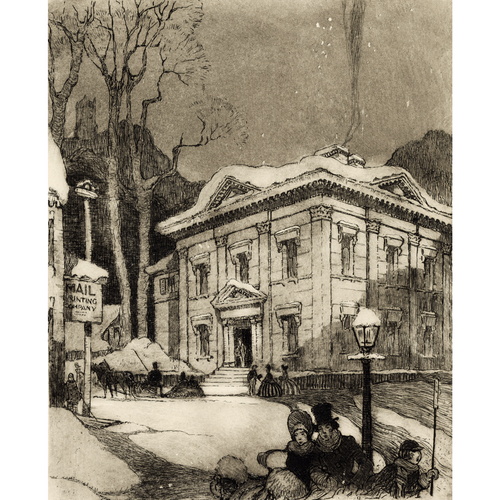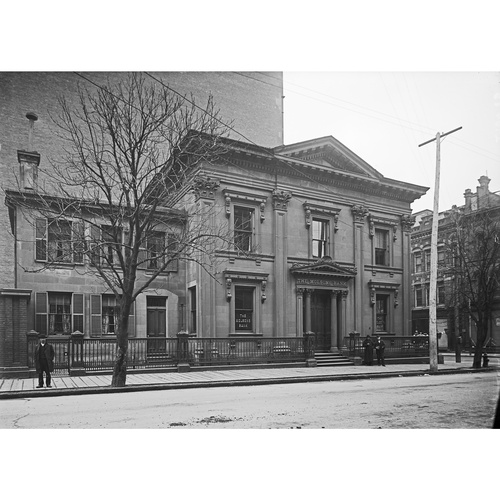CAWTHRA, WILLIAM, capitalist; b. Yeadon, Yorkshire, Eng., 29 Oct. 1801, son of Joseph Cawthra* and Mary Turnpenny; d. Toronto, Ont., 26 Oct. 1880.
Joseph Cawthra came to Canada in 1803 and settled near the present Port Credit on Lake Ontario. Limited financial resources led him to enter retail trade, one of the few business opportunities of that time. Before long Cawthra broadened his shop into a general store.
His son William was educated by the Reverend G. Okill Stuart* at the Home District grammar school, which was open to children of all ages. William then went into his father’s shop, which, like many others in York (Toronto), had profited from heavy British purchasing during the War of 1812. After his father died in 1842, William closed the shop, having inherited it and the greater part of a substantial estate. In 1849 he married Sarah Ellen Crowther, sister of James Crowther, a lawyer, and lived in a brick cottage in Yorkville village, at Bloor and Jarvis Streets in present-day Toronto.
While living there he built a large and handsome house at Bay and King streets. It was completed in 1853 and there he passed the rest of his days. Designed in classical style by Joseph Sheard, it was constructed of cut stone, with roof timbers hand-hewn and fastened together by wooden pegs. The house was in the area of Cawthra’s principal business interests, for he owned downtown property bought by his father or himself. The rents in that district rose in value and no doubt constituted the greater part of Cawthra’s income. He also, however, made loans of a conservative character, on the security of real estate or of bank and government bonds and was a large holder of bank stocks. He was a director of the Bank of Toronto and of one or two companies. He had at least one secretary or agent, but as he does not appear to have had a business address he evidently conducted his affairs from his house.
Cawthra was alderman for St Lawrence ward in the first Toronto City Council of 1834, and again in 1836 after a conservative reaction had eased. In 1847 he was appointed by council to the Board of Trustees for common schools. He was an active worker in the House of Industry and a contributor to the building of the Toronto General Hospital. He died, without issue and intestate, leaving an estate of more than $2,000,000. His beautiful house long remained as his monument, but he is a shadowy figure of whom there is little record.
York County Surrogate Court (Toronto), will of William Cawthra. Past and present, notes by Henry Cawthra and others, comp. A. M. Brock, ed. A. H. Young (Toronto, 1924), 32–36. Middleton, Municipality of Toronto, I, II. Ross and Trigge, History of the Canadian Bank of Commerce, III, 356–57, 384.
Cite This Article
G. de T. Glazebrook, “CAWTHRA, WILLIAM,” in Dictionary of Canadian Biography, vol. 10, University of Toronto/Université Laval, 2003–, accessed December 19, 2025, https://www.biographi.ca/en/bio/cawthra_william_10E.html.
The citation above shows the format for footnotes and endnotes according to the Chicago manual of style (16th edition). Information to be used in other citation formats:
| Permalink: | https://www.biographi.ca/en/bio/cawthra_william_10E.html |
| Author of Article: | G. de T. Glazebrook |
| Title of Article: | CAWTHRA, WILLIAM |
| Publication Name: | Dictionary of Canadian Biography, vol. 10 |
| Publisher: | University of Toronto/Université Laval |
| Year of publication: | 1972 |
| Year of revision: | 1972 |
| Access Date: | December 19, 2025 |





